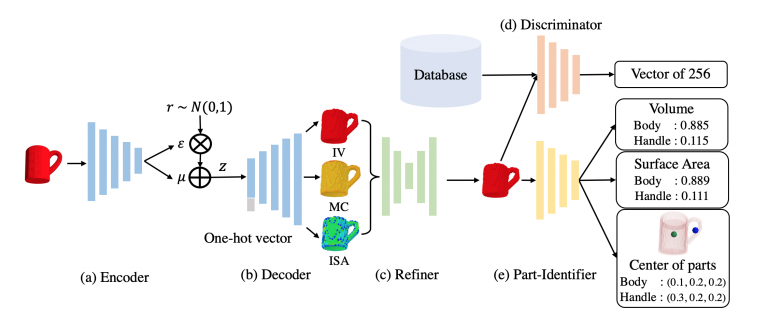Abstract: We propose a conditional generative model, named Part Geometry Network (PG-Net), which synthesizes realistic objects and can be used as a robust feature descriptor for object reconstruction and classification. Surface and volumetric...



Abstract: First-person-view videos of hands interacting with tools are widely used in the computer vision industry. However, creating a dataset with pixel-wise segmentation of hands is challenging since most videos are captured with fingertips...

We introduce a large-scale annotated mechanical components benchmark for classification and retrieval tasks named Mechanical Components Benchmark (MCB): a large-scale dataset of 3D objects of mechanical components. The dataset enables data-driven...

Recognition of human behavior plays an important role in context-aware applications. However, it is still a challenge for end-users to build personalized applications that accurately recognize their own activities. Therefore, we present CAPturAR,...

Makerspaces can support educational experiences in prototyping for children. Storytelling platforms enable high levels of creativity and expression, but have high barriers of entry. We introduce StoryMakAR, which combines making and storytelling....

Mobile robots and IoT (Internet of Things) devices can increase productivity, but only if they can be programmed by workers who understand the domain. This is especially true in manufacturing. Visual programming in the spatial context of the...

Machine tasks in workshops or factories are often a compound sequence of local, spatial, and body-coordinated human-machine interactions. Prior works have shown the merits of video-based and augmented reality (AR) tutoring systems for local tasks....

Augmented Reality (AR) has become a valuable tool for education and training processes. Meanwhile, cloud-based technologies can foster collaboration and other interaction modalities to enhance learning. We combine the cloud capabilities with AR...

The emerging simultaneous localization and mapping (SLAM) techniques enable robots with the spatial awareness of the physical world. However, such awareness remains at a geometric level. We propose an approach for quickly constructing a smart...

Engineering design typically occurs as a collaborative process situated in specific context such as computer-supported environments, however there is limited research examining the dynamics of design collaboration in specific contexts. In this...